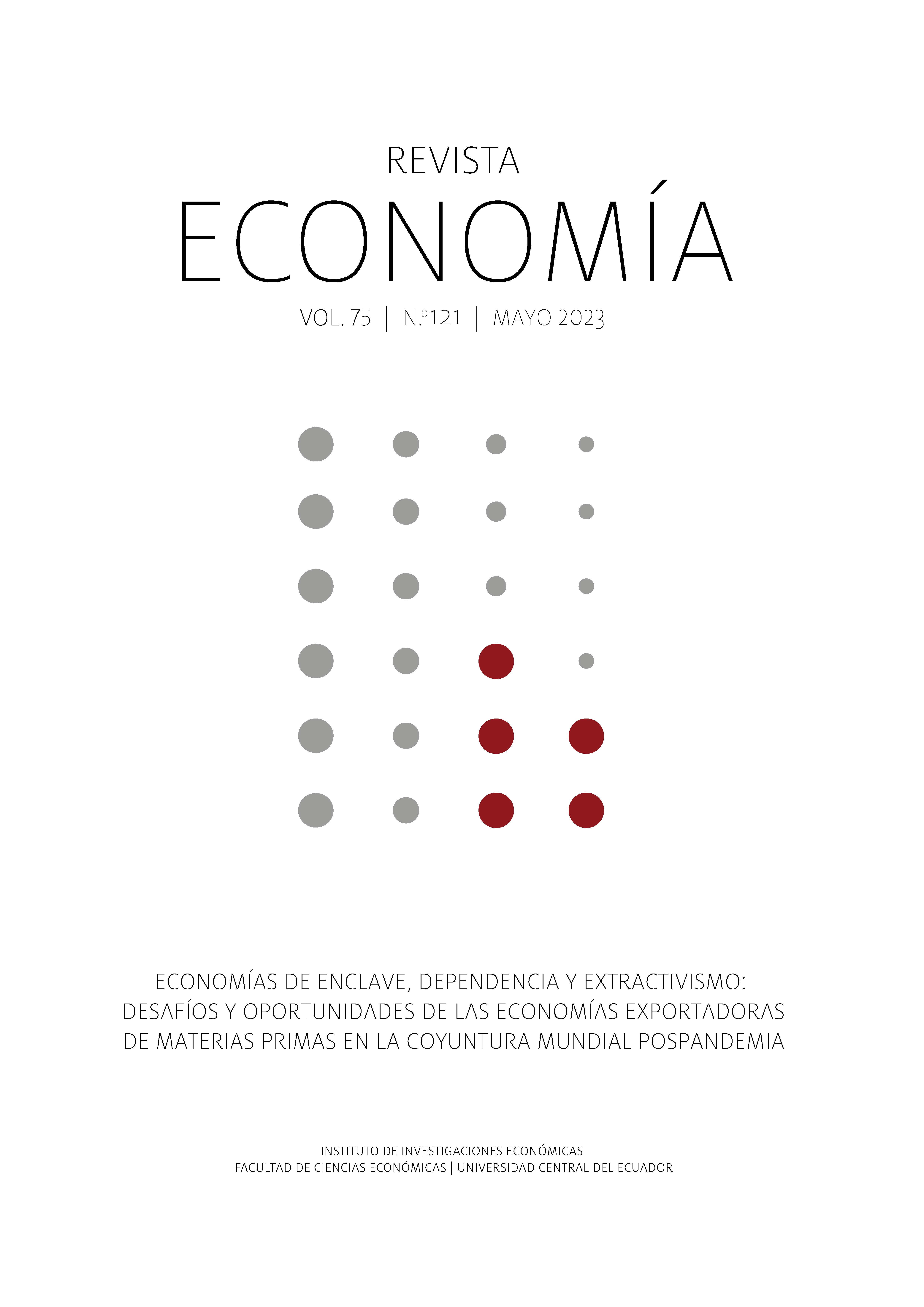Estructura laboral ecuatoriana: Trimestre abril-junio de 2022
Main Article Content
Abstract
National labor statistics lack indexes that directly measure the quality and characteristics of employment. These indicators are necessary for the achievement of analyses that contribute to public policy. Two indexes are proposed here that indicate that in Ecuador the rate of precarious employment is 3.76 times higher than that of stable jobs: for every worker with stable employment, there are four precarious ones. Women are also more affected by unpaid work. Finally, the distribution of wages is asymmetrical to the detriment of workers' possibilities of material reproduction, with greater impact on women, indigenous and Afro-Ecuadorian workers.
Downloads
Article Details

This work is licensed under a Creative Commons Attribution-NonCommercial 4.0 International License.
The authors who publish in this journal accept the following conditions:
- The authors retain the copyright and assign to the Economics Magazine the right of the first publication, with the work registered under Creative Commons Attribution-NonCommercial 4.0, which enables third parties to redistribute, commercial or non-commercial, of what has been published as long as the article circulates completely and without changes.
- Authors can make other independent and additional contractual agreements for the distribution of the article published in this journal (for example, add it to an institutional repository or publish it in a book) as long as they clearly and clearly specify that the article was published for the first time. once in Revista Economía. In case of reproduction, a note similar to the one presented below must be included: This text was originally published in the Revista Economía No.…, volume…, number of pages, year of publication.
- Authors are suggested to publish their work on the internet (for example, on institutional or personal pages) of the final version published by Revista Economía since this can lead to greater and faster dissemination of the published article.
References
a ciet. (2013). Resolución sobre las estadísticas del trabajo, la ocupación y la subutilización de la fuerza de trabajo. http://www.ilo.org/global/statistics-and-databases/standards-and-guidelines/resolutions-adopted-by-international-conferences-of-labour-statisticians/WCMS_234036/lang--es/index.htm
Carrión Sánchez, D. (2018). Los números también mienten: subempleo y estadística laboral en el Ecuador. Revista Economía, 70(112), 121-136.
Carrión Sánchez, D. (2022a). Metodología para construir el índice de precariedad laboral. Quito.
Carrión Sánchez, D. (2022b). Metodología para la distribución de la población a partir del índice Relación Laboral. Quito.
Castillo, R. (2015). Empleo y condición de actividad en Ecuador. https://doi.org/Quimica
Félix, G. (2019). Acerca del concepto de ejército industrial de reserva en Ruy Mauro Marini. In Superexplotación del trabajo en el siglo xxi. El Tiple.
Marini, R. M. (2008). Dialéctica de la dependencia (1973). América Latina, dependencia y globalización.
Molina, A., Rivadeneira, A. y Rosero, J. (2015). Actualización metodológica: el empleo en el sector informal. Quito.

